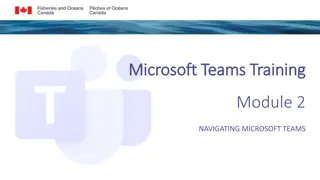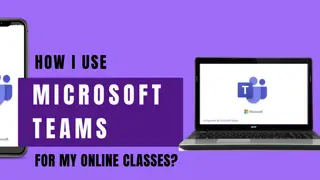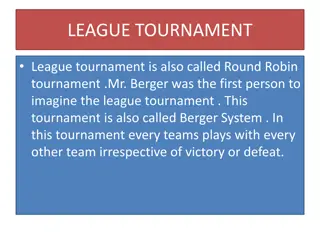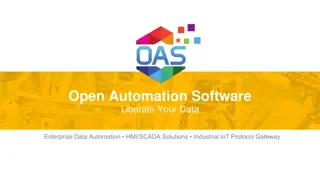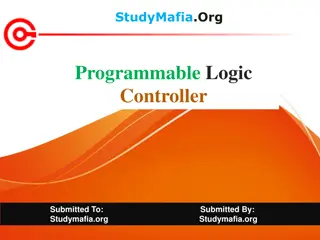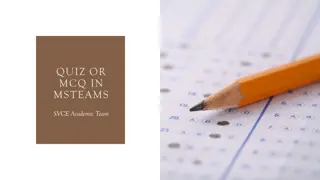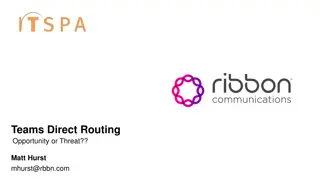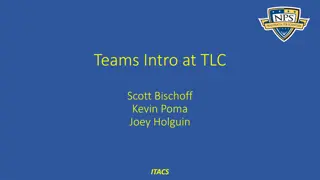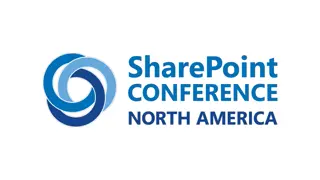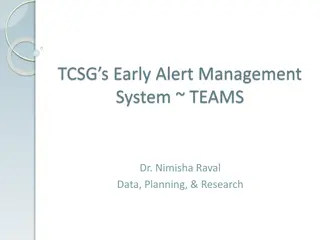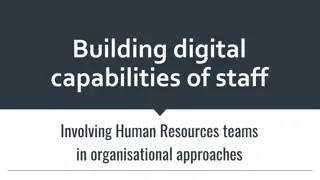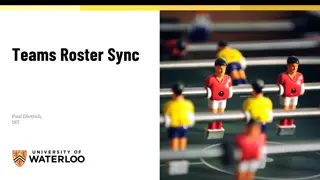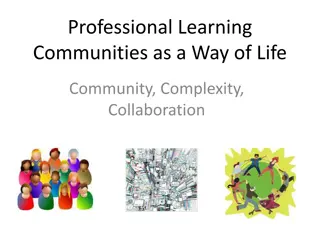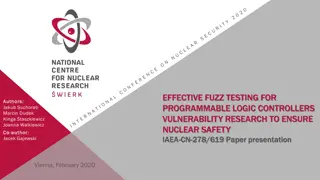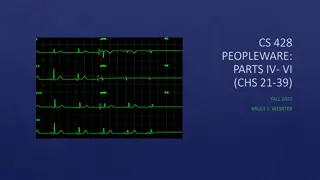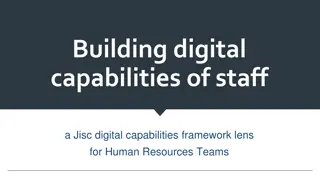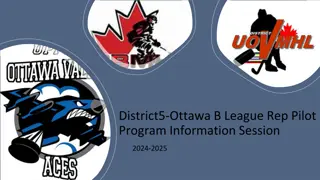Effective Strategies for Facilitating Teacher Teams in PLCs
Facilitating a Professional Learning Community (PLC) requires guiding educators through a collaborative process focused on teaching and learning. The PLC facilitator plays a crucial role in steering discussions, promoting respect, and maintaining team dynamics. Balancing content and process is key to ensuring productive meetings and achieving desired outcomes. Content and process questions help the facilitator keep discussions on track and maximize the benefits of the PLC. This comprehensive guide emphasizes the responsibilities and strategies for effective PLC facilitation.
Download Presentation

Please find below an Image/Link to download the presentation.
The content on the website is provided AS IS for your information and personal use only. It may not be sold, licensed, or shared on other websites without obtaining consent from the author. Download presentation by click this link. If you encounter any issues during the download, it is possible that the publisher has removed the file from their server.
E N D
Presentation Transcript
Facilitating your Team PLC For Granite School District Educators 16-1 Facilitating Your Team PLC Title Slide.mp3 Source and Recommended Book: Venables, Daniel. (2015) Facilitating Teacher Teams and Authentic PLCs. Solution Tree.
The Role of the PLC Facilitator A PLC facilitator s primary role is to guide the process for his or her teacher team. If team members are authentically and honestly engaging in quality interactions focused on teaching and learning, then their students achievement can improve. 16-2 The Role of the PLC Facilitator.mp3
Facilitator Job Responsibilities Include: Guiding the team through the steps and protocols. Asking thought-provoking questions that challenge conventional thinking and push the discussion to a deeper level. Promoting and modeling honesty and respect in discussions. Ensuring that all voices are heard. Maintaining team members emotional safety during discussions Keeping the team focused and moving forward when it s stuck. Mediating disagreements and helping the team navigate the sometimes-turbulent waters of interpersonal dynamics. Being able to step back, particularly with being emotionally drawn into a problematic group dynamic. Working for the good of the team. 16-3 Facilitator Job Responsibilities.mp3
Balancing CONTENT and PROCESS While all other team members can fully immerse themselves in the content of the PLC s work, the facilitator must concern herself with both content and process if she is to keep things moving smoothly, maximize the benefits of the discussion, and maintain high-quality discourse. 16-4 Balancing Content and Process.mp3
Content Questions Process Questions What is on our agenda? What information needs to be shared with or conveyed to teachers? Which elements of the PLC cycles (student learning, common planning) are we working on during this meeting? What action items will we create for next time? What are our most important or pressing items to complete? How will we use data to inform our discussion and planning? Are all members contributing? Is the discussion superficial or shallow? Is the body language of any member communicating discomfort with what is being said? Is the conversation straying off topic? Is any member dominating talk time? Is the current segment of the protocol running over time? Should I allow over-time conversations to continue or move to the next topic? 16-5 Content Questions and Process Questions.mp3
Empowering Your Team High-functioning PLCs exude a clear sense of empowerment in their work. An empowered PLC team is deeply engaged and committed to the work at hand. All members contribute to the discussion knowing their remarks matter and will be received by other members as valid contributions. Team members embrace personal responsibility for the outcomes of their collective labor. 16-6 Empowering your Team.mp3
Ways to Empower your Team Members: Communicating pertinent info and expectations before the meeting Implementing and following effective protocols Allowing time for team members voices and validating their voice in discussion time Truly believing in your team members and holding them to high expectations Delegating tasks and taking the time to follow up on these important tasks Setting and using clear meeting norms and team member roles 16-7 Ways to Empower your Team Members.mp3
Setting and Following Meeting Norms The following are questions to consider when determining your team norms and guidelines for your productive PLC. Time When will we meet? When will we end? How will we keep time? Will we have a tardiness policy? Listening How will we encourage listening? How will we discourage interrupting? 16-8 Setting and Following Meeting Norms 1.mp3
Confidentiality Will the meetings be open or closed? What content in the meetings is confidential? What can be discussed with one another or others afterward? Decision Making How will we make decisions? How will we deal with conflicts or disagreement? Participation How will we encourage everyone s participation? Will we have an attendance policy? How will we ensure everyone feels comfortable participating? Expectations 16-9 Setting And Following Meeting Norms 2.mp3 What will we expect from members? How will we follow up on action items agreed to in the meeting? How will we remind or self-enforce our norms?
Utilizing a Clear and Communicative Agenda A clearly communicated agenda is an essential element of a productive PLC. A clear and communicative agenda will have the following components: School and team goals you are working toward. Element of the PLC process in which the team will be accomplishing. What members should to prepare or bring to the meeting. Items to discuss to accomplish goals. A place to take notes and document action items for the next meeting. 16-10 Utilizing a Clear and Communicative Agenda.mp3
Suggested PLC Member Roles Facilitator - Develop agenda and distribute it to all team members Facilitate the meeting Keep team focused on goal Ensure all voices are heard Recorder - Record minutes Post minutes in PLC Shared Folder Maintain PLC team Shared Data folder that contains team information and resources Time Keeper - Monitor agenda times & topics Keep group focused and moving Monitor start & end times Call for tabling a subject or making a decision. Reporter - Review norms at the start of the meeting Assess the team s use of norms at the end of the meeting Review minutes from previous meeting Act as a liaison to school personnel outside of the team. 16-11 Suggested PLC Member Roles.mp3 Norm Checker - Reminds the team when team norms are being violated Compliments when norms are followed.




